How To Organize Your Tiny Garden
Tired of trying to make your tiny garden feel welcoming? These small garden layout ideas will be sure to come in handy. Even the most compact of spaces can be arranged in a way that makes them feel both functional and more enjoyable to be in.
We know that not everyone has the luxury of acres of ground to play with. And, let's face it, small spaces can feel uninspiring at first. Presented with a blank slice of patio or tiny balcony can leave us wondering where on earth to start...
The good news is that any garden, no matter how big (or small) its size, is full of opportunity. In fact, it's easier than you might think to create your own mini paradise, extend your living area, and improve your quality of life. Plus, small garden ideas are often cheaper and easier to maintain.
We've put together our tips on everything minimal planting and small-garden zoning to miniature lawns and space-enhancing tricks, so you'll be able to nail your small garden layout ideas before you know it.
1. Plan your layout around the sunlight
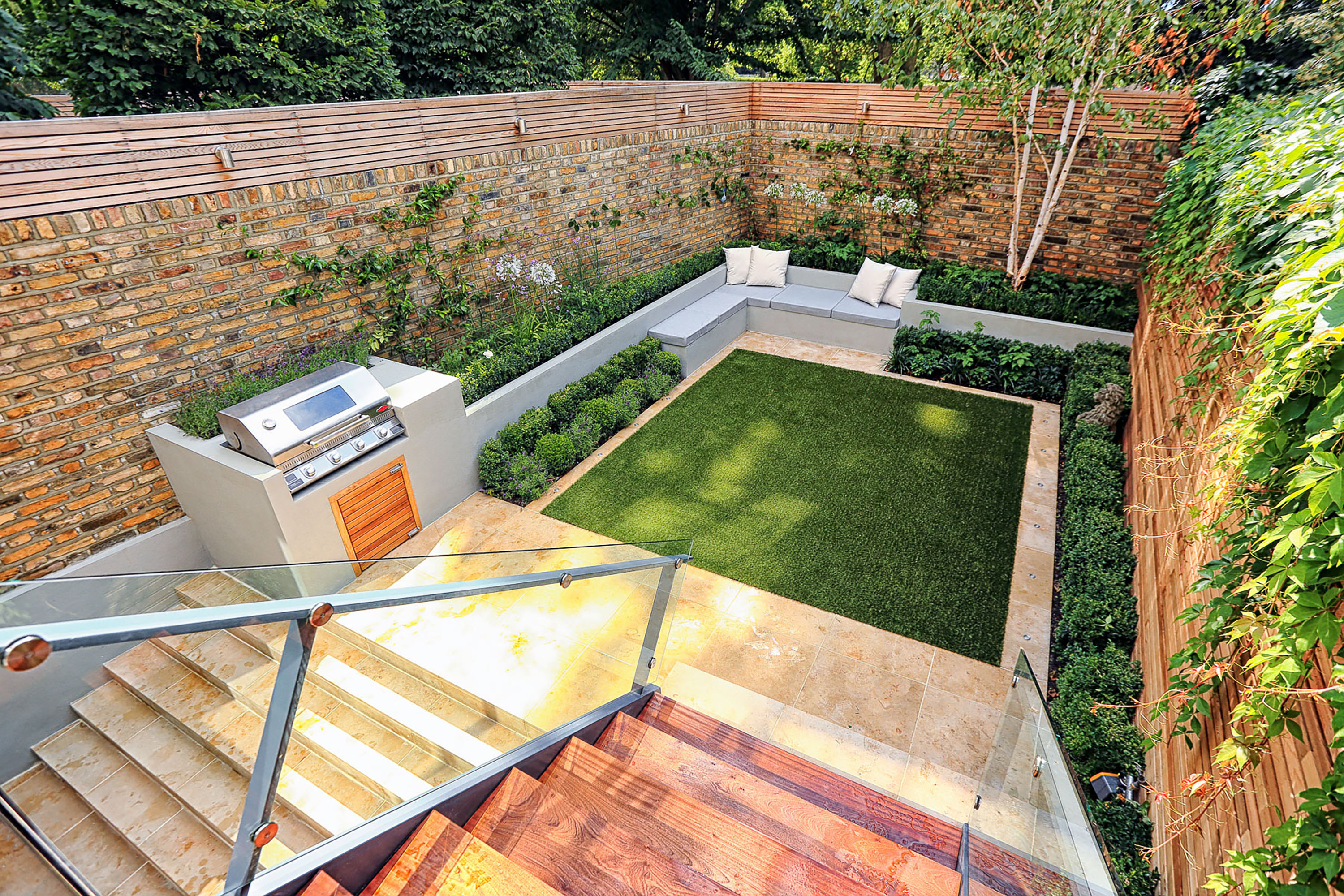
A low-maintenance London garden designed by Harrington Porter
(Image credit: Harrington Porter)
Chris Harrington, Creative Director of garden design practice Harrington Porter, shares his expert advice when it comes to working with natural light. He explains that in urban areas especially, due to the built-up surroundings, the sun is a key driver for any small garden. Some plots may only get a glimpse of sunlight during the day, or an hour or two in the evening. So, if you like sitting in the sun, then make sure your seating is positioned to make the most of it.
In this example above, the outdoor sofa catches a lovely dose of evening light, before the sun sets behind the house. On the other hand, if you prefer sitting in the shade, then position your seating to match.
This small, contemporary garden design also benefits from having an artificial lawn. There's no maintenance required and no need to store a mower – both big plus points for small, modern garden ideas. As well as this, Chris says that small gardens with high sides are often shady, which can be problematic when it comes to growing a verdant lawn.
2. Straighten up your plot with angles
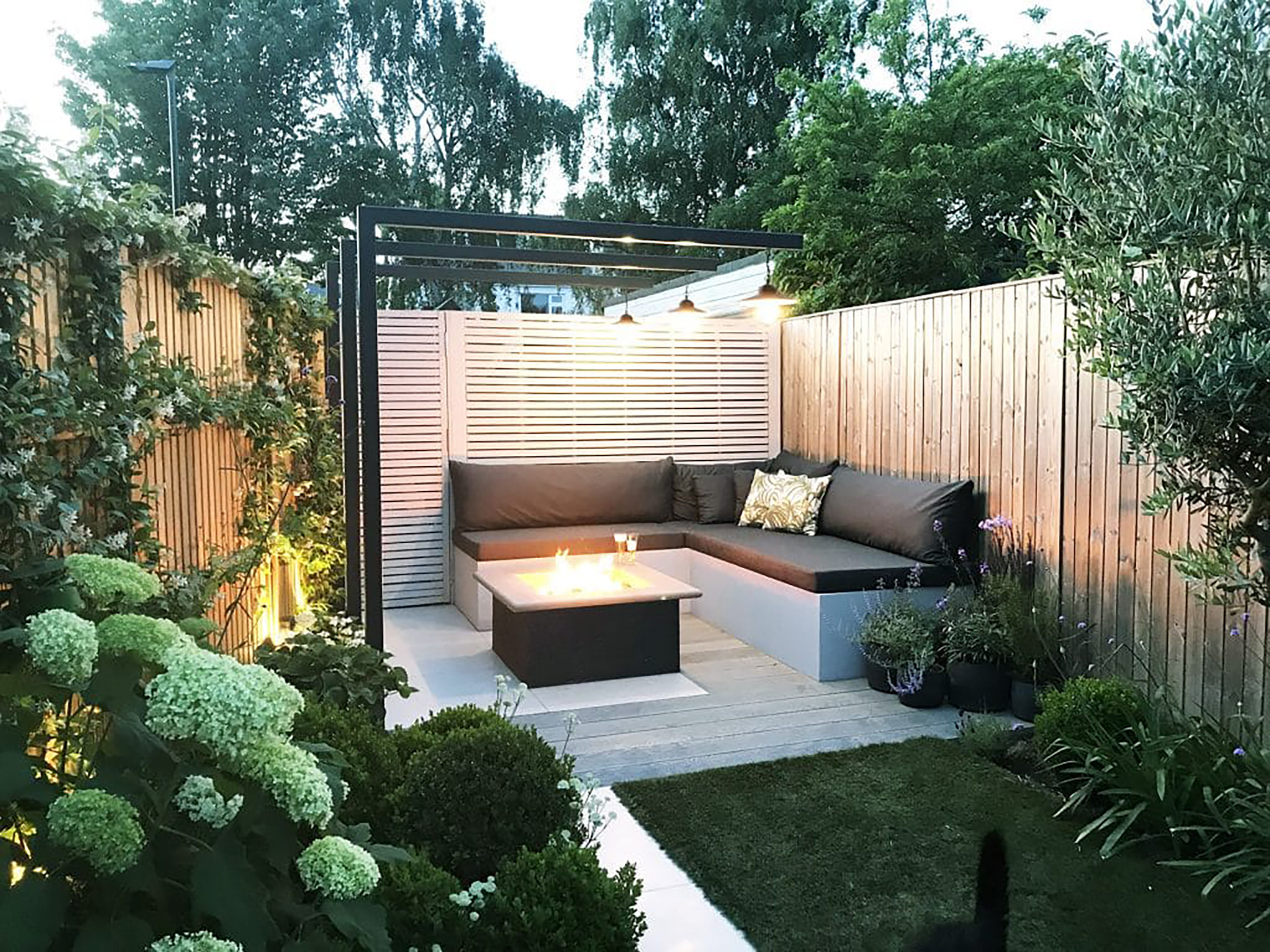
Using straight lines can open up space – as shown in this garden designed by Harrington Porter
(Image credit: Harrington Porter)
The garden above was very narrow with a tapered shape – almost like a triangle, 'Careful planting and structures were used to balance out the shape and square it up with the house,' says Chris Harrington of Harrington Porter. This included the addition of fences, which cut into the garden in straight lines, adding a feeling of space.
For contemporary gardens, Chris advises against using curves. Straight lines can always be softened with planting to create a more welcoming vibe.
3. Break the space up into zones
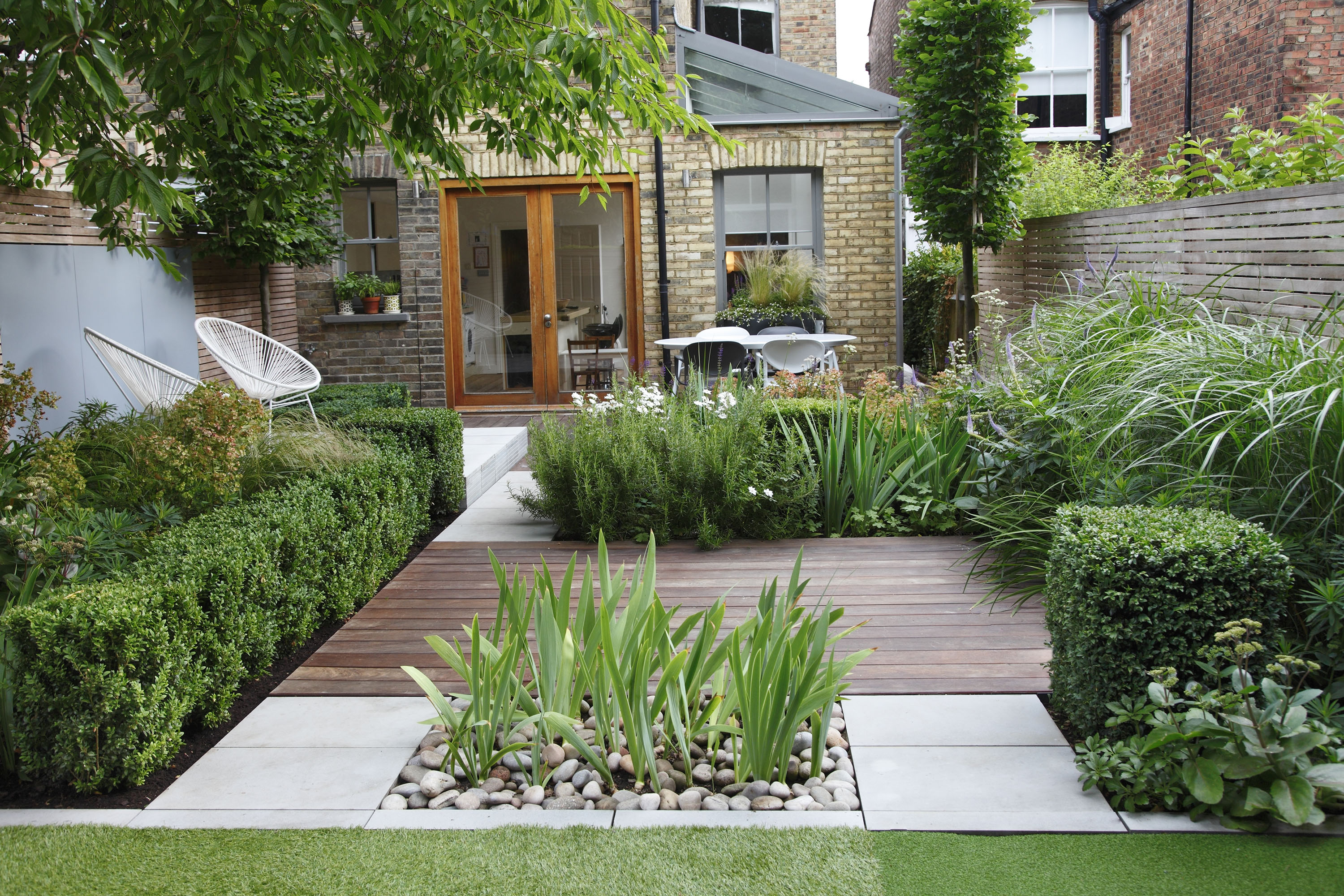
Designed by Lucy Willcox Garden Design , this modern garden uses decking, paving and planting to create different zones
(Image credit: Annaick Guitteny/Lucy Willcox Garden Design/Future)
'Space permitting, dividing up the garden into different rooms can, paradoxically, make your garden feel bigger, giving a greater sense of depth and installing a real sense of intrigue,' says Nick Woodhouse, director of garden and interior design practice Woodhouse and Law.
Sam Selby, founder of Selby Landscapes, explains how it can be done. 'Use planting, screens, walling, or changes in materials to create different areas,' he advises. 'Hide a seating area with plant-covered screens or use different sized paving to give the impression of space.'
Garden designer Hannah Rickards of Hannah Rickards Garden Design also suggests the use of different paving materials and patterns to create a sense of transition from each area. 'For example, try a brick path to a stone terrace, or a lawn to deck area,' she says.
This garden demonstrates zoning perfectly, using soft hedging, decking ideas, light paving slabs, and decorative stones. It creates three distinct zones to enjoy, away from the lawn. Setting the decking boards horizontally to the paving also helps to widen the space.
4. Make it a multifunctional playing space for the kids
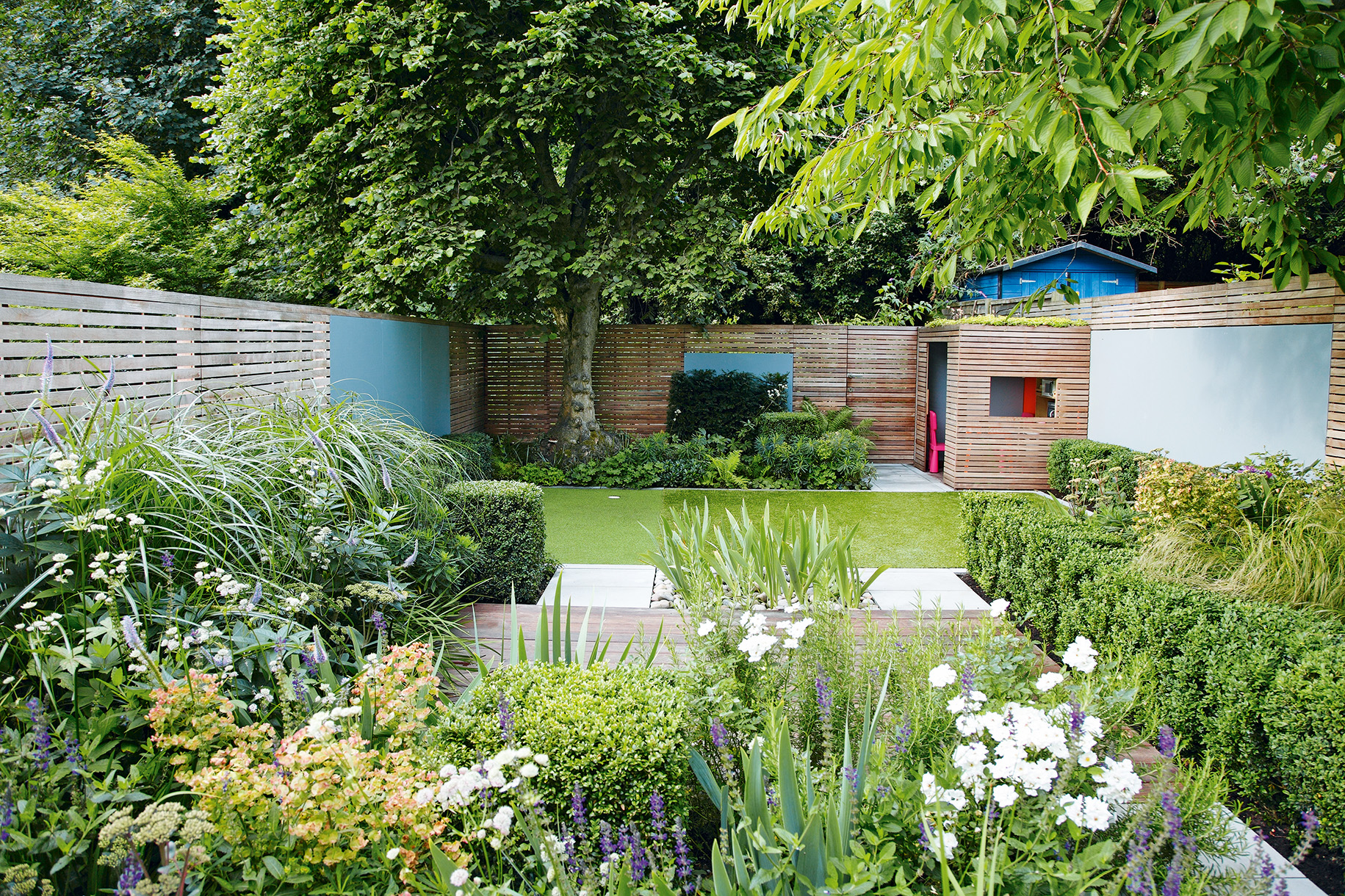
Zone your space to create areas where kids can play
(Image credit: Annaick Guitteny/Future)
If you need incorporate an area for kids to play in your small garden layout ideas, create walled spaces or raised garden beds for plants or choose hardy specimens that won't mind being hit by a football every now and again.
A grass lawn is good as it provides a soft place to play. Or try other mat-forming plants like creeping thyme (Thymus serpyllum) and mind-your-own-business (Soleirolia soleirolii).
Be mindful of storage – look out for clever seat, planter and storage combinations. Think about the views you want too. If you have children you will want to keep an eye on them – but also provide space for them to explore. Use low hedging or planted areas to create room for adventures.
There's plenty more inspiration in our family garden ideas feature.
5. Use blocks of color to separate areas
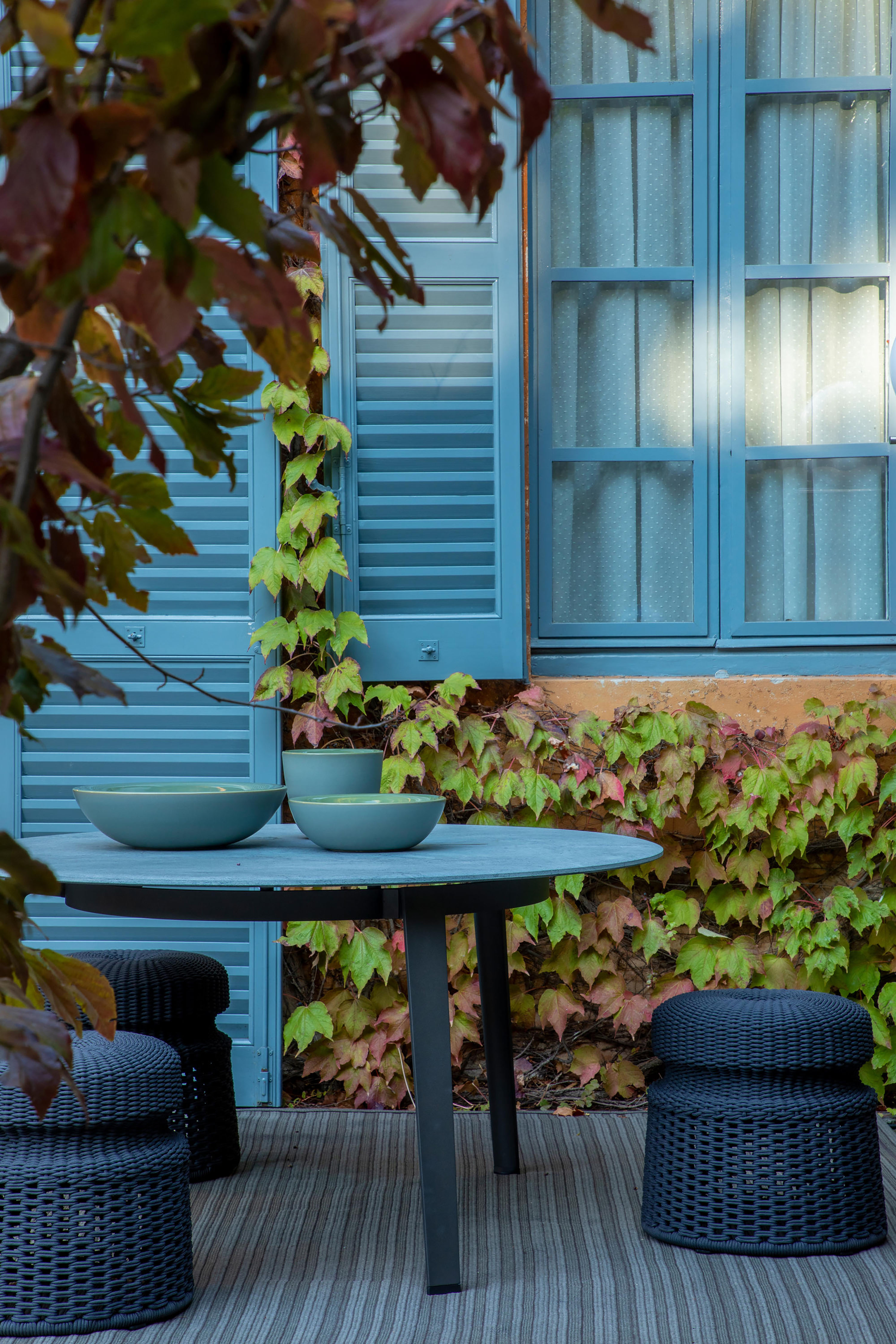
Use different hues to separate spaces
(Image credit: Chaplins Furniture)
What color makes you happy? Midnight navy, pastel pinks, melon-sorbet green, vivid fuchsia? Remember, your tiny space is exactly that – yours. So put your stamp on it by painting the walls, the fence, the windowsill, even the floor in your favorite colors, to separate different zones.
This color-blocking technique is oh-so on-trend (check out our garden trends 2021 if you want to see for yourself).
If you use a palette of complementary colors, you can also add an extra layer of depth to your garden color schemes. Color block your planting too, for maximum impact. For example, choose a light blue theme for a patio dining area, whilst a relaxation space amongst the flowerbeds could be in silver and white hues.
6. Make a shaded seating area beneath a canopy of plants
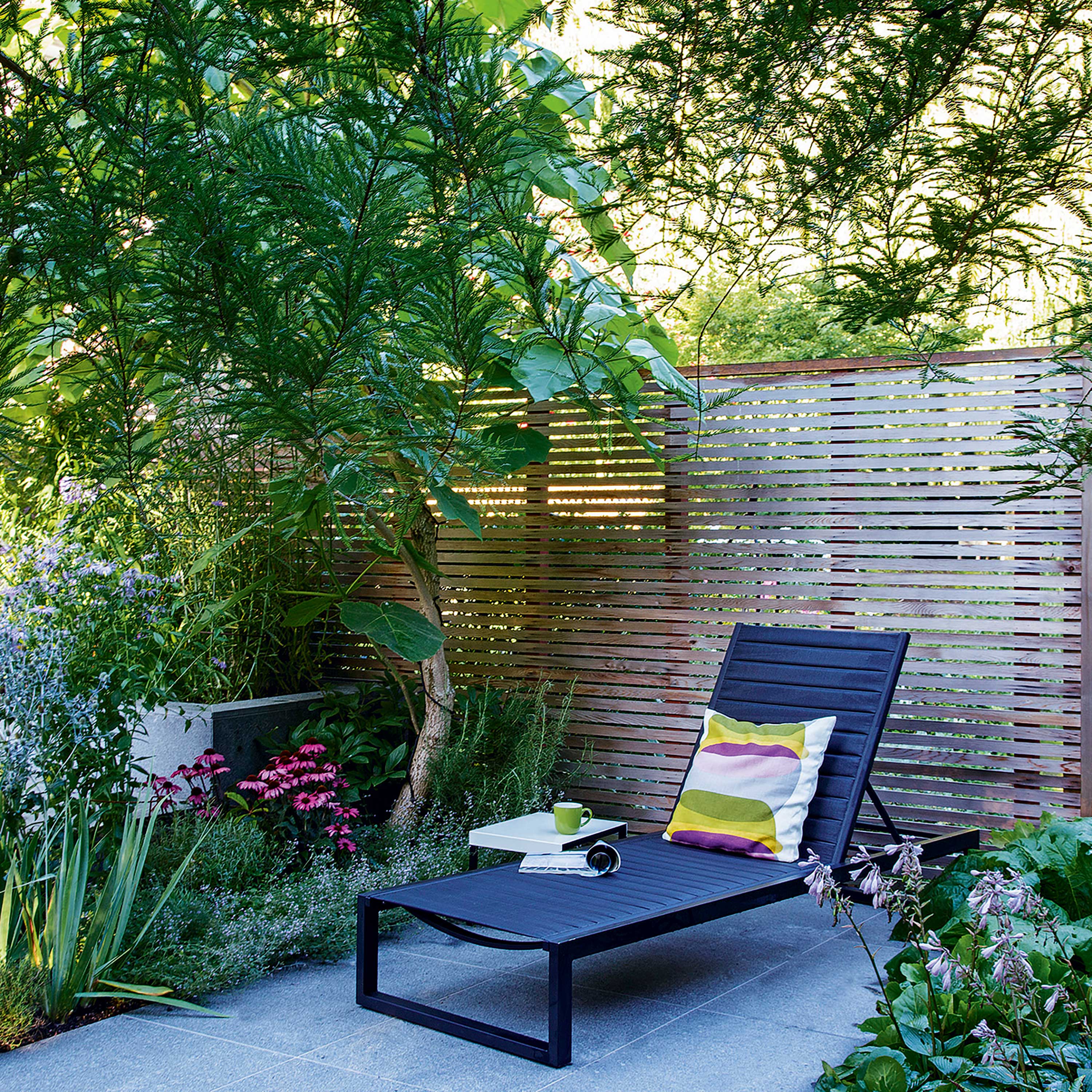
Use trees and tall plants to create a shady, secluded spot
(Image credit: Mark Bolton/Future)
If you're after a secluded seating area in your small garden layout ideas – perhaps to enjoy a good book, a glass of wine in the evening, or simply the fresh air – then this tip is for you. Section off an area of the garden using lots of tall planting and small trees, creating a lush canopy. Add a comfy lounger and perhaps some ambient garden lighting ideas, and voila! A secret, shaded spot to relax in private.
Position away from the house for the ultimate back garden retreat. It'll be your new favorite spot in no time.
7. Plant vertically to add a feeling of height
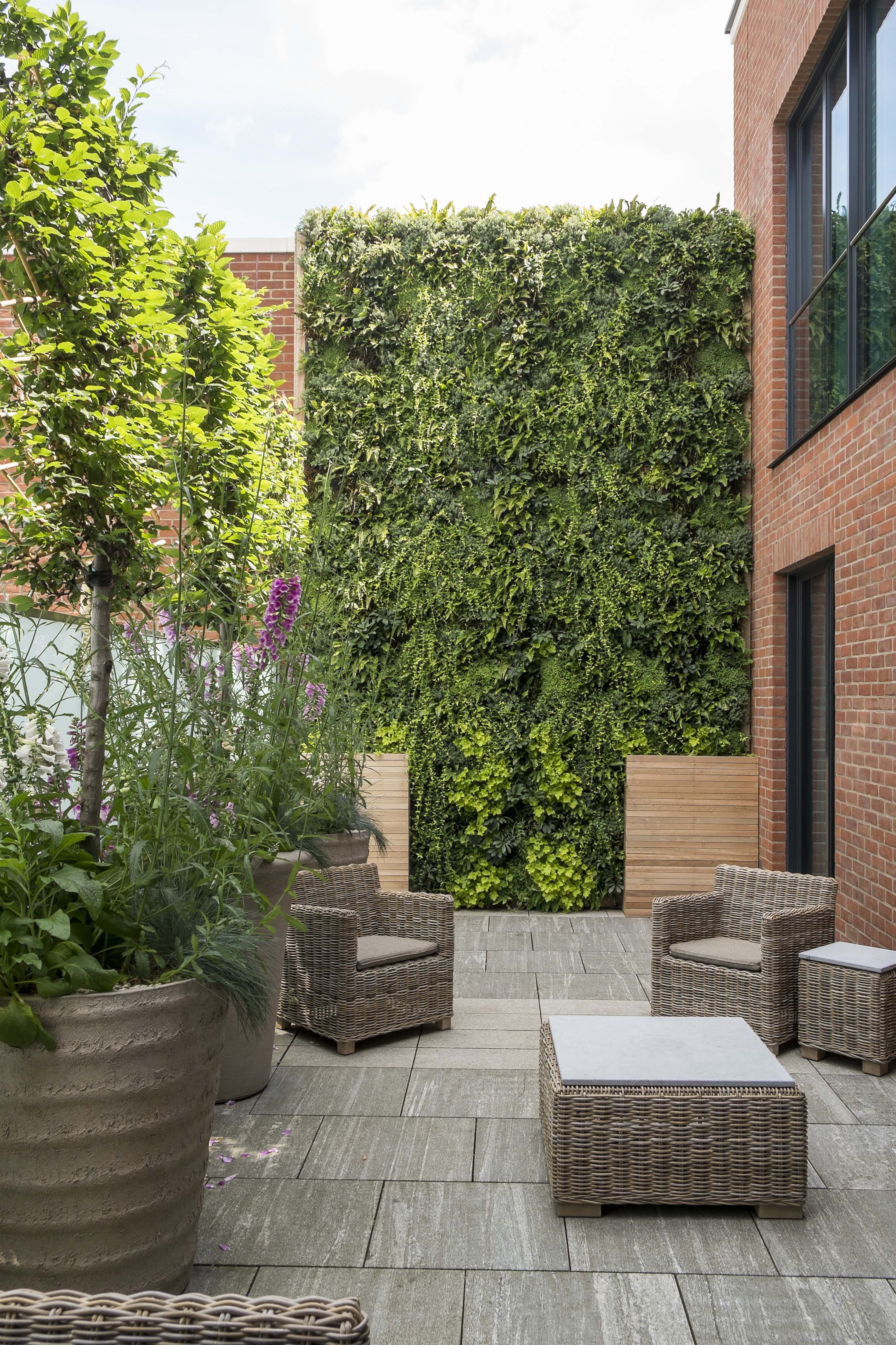
A living wall adds a vibrant feature
(Image credit: James Merrell/Future)
In a small plot, floor space might be tight. So why not think about making the most of the height in small garden layout ideas instead? Using the vertical space wisely is a clever way to make a small space feel full of greenery.
Living walls will soften harsh lines and landscaping materials. Look out for hanging planters made up of pockets, ready to be filled with herbs, flowers or even veg.
Take a look at our living wall guide if you're interested in making your own.
8. Split up your seating areas
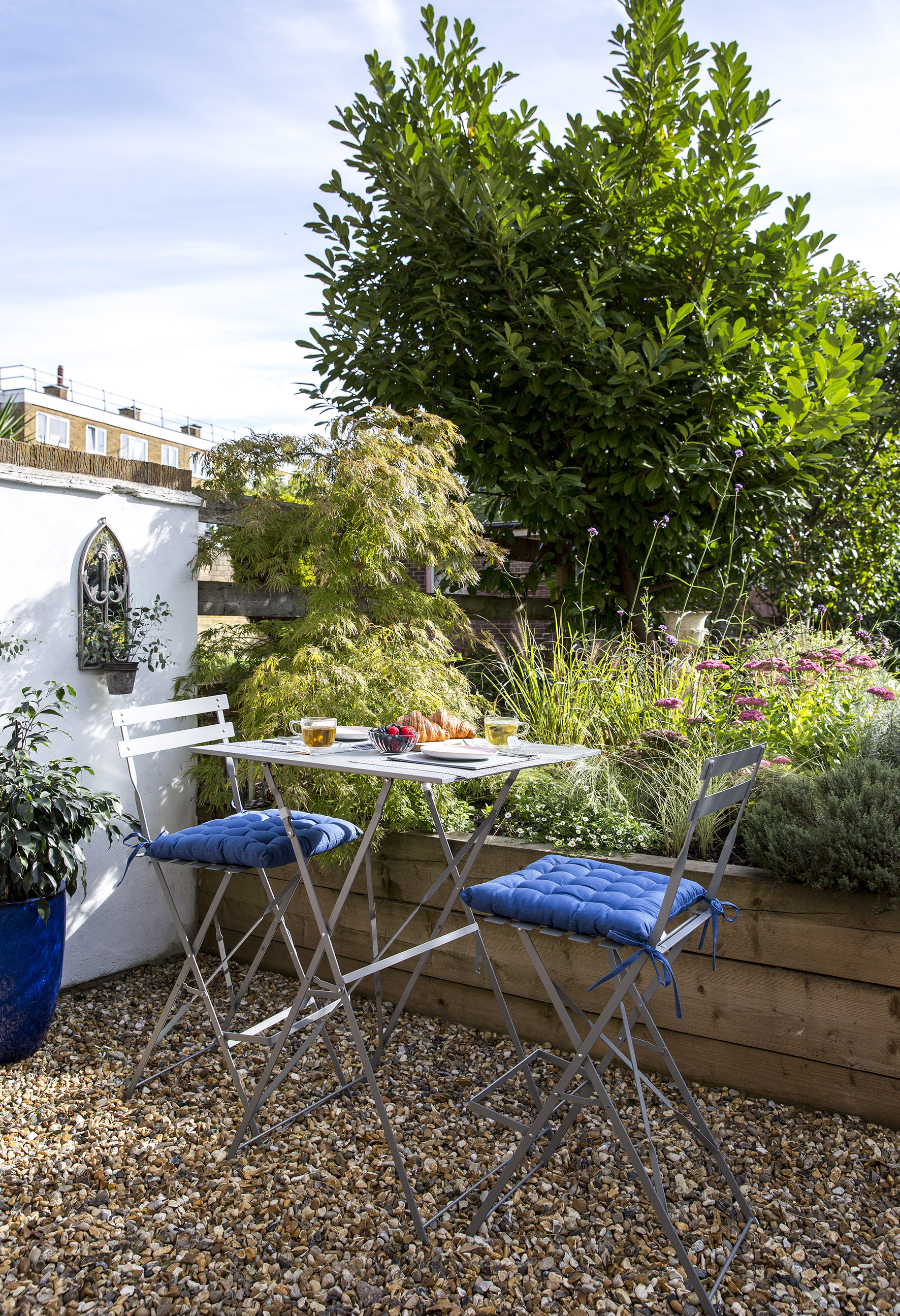
Even a small space can benefit from more than one seating area
(Image credit: Lizzie Orme/Future)
Even small garden layout ideas can have room for a couple of different seating areas within the space. Why not put your dining area in a corner that gets evening sun, and a couple of chairs where you can enjoy your morning coffee? Maybe you want one submerged in a flowerbed too?
You don't have to include your garden table ideas right next to the house either – if your table is at the back of your plot, it will encourage you to use more of the garden.
9. Create bespoke seating around tree trunks
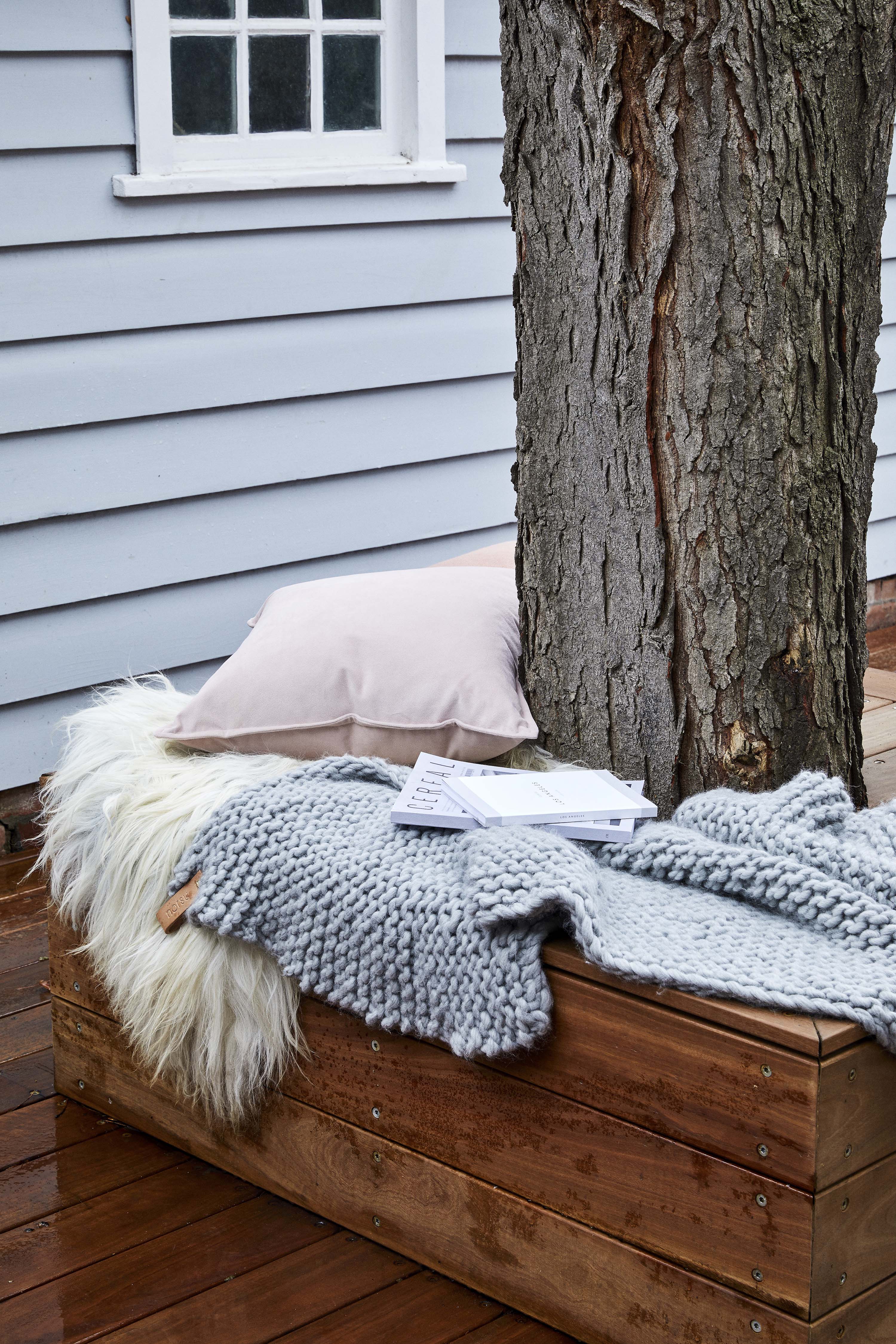
Make the most of your garden's trees
(Image credit: norsu interiors)
If you have a tree or two in your small garden, then you might feel like it's taking up precious space. Although the summer leaves or spring blossom are welcome perks, perhaps there's no room for an additional seating area without things feeling cramped.
Well, here's a tip you can use to maximise your trees' potential, to make them functional as well as beautiful. Build a bench seat around the trunk to create a place to sit, to decorate with extra plants, or even to place outdoor lighting. Opt for natural materials for a cohesive, laid-back vibe for your small garden layout ideas.
10. Open up your layout with minimal fencing
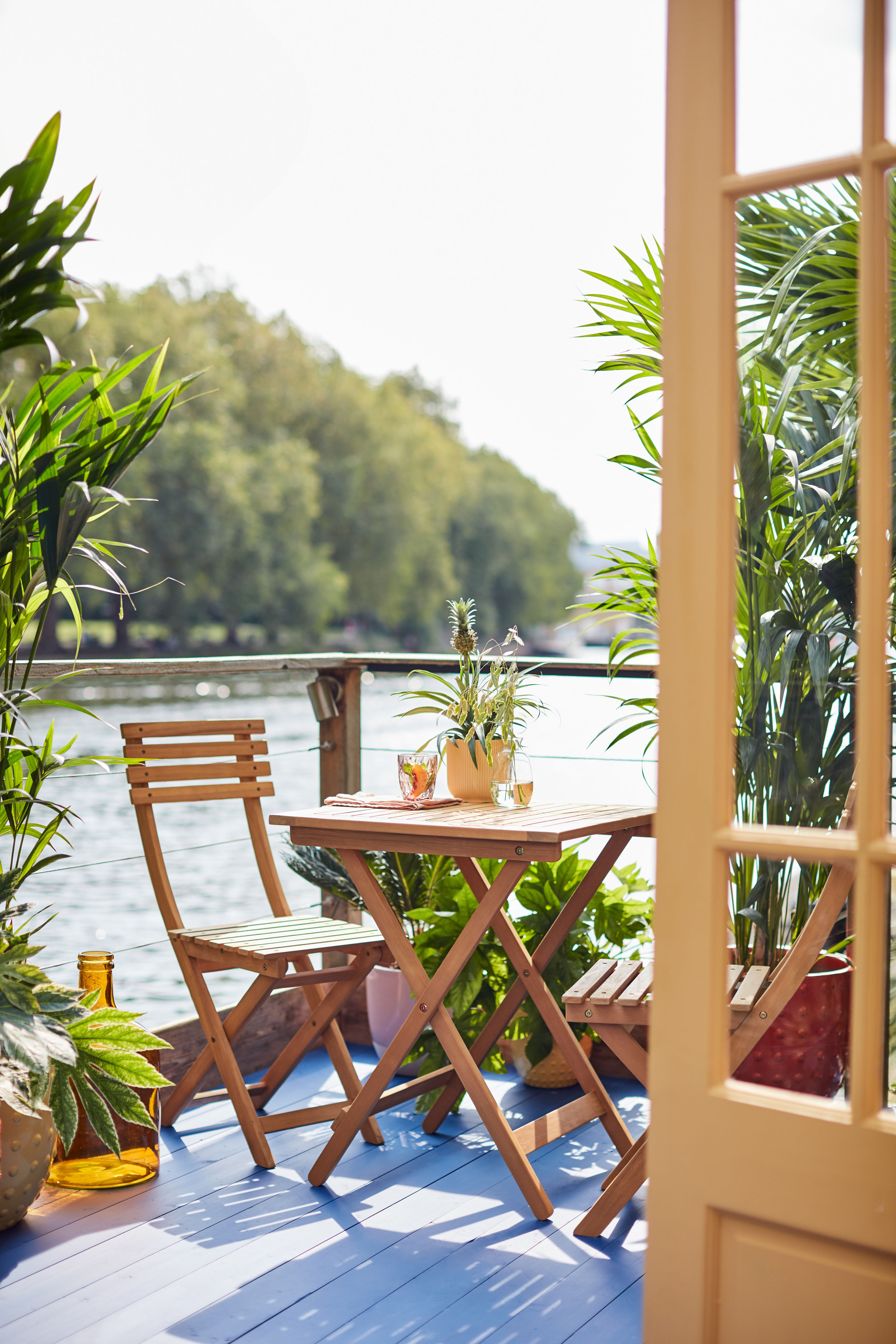
Open up the view and make your garden feel spacious
(Image credit: Dobbies)
Is your garden small, but your views vast? Perhaps you're lucky enough to have water nearby, or fields on the other side of your plot. Well, how about making the most of the outside world by using minimalistic garden fence ideas.
In other words, rather than penning in your plot with solid fence panels, use designs which will provide a subtle barrier, without blocking views or light. Then, position your seating towards the view to make the most of it – it will instantly feel like your garden is more spacious.
11. Create different rooms with decorative screens
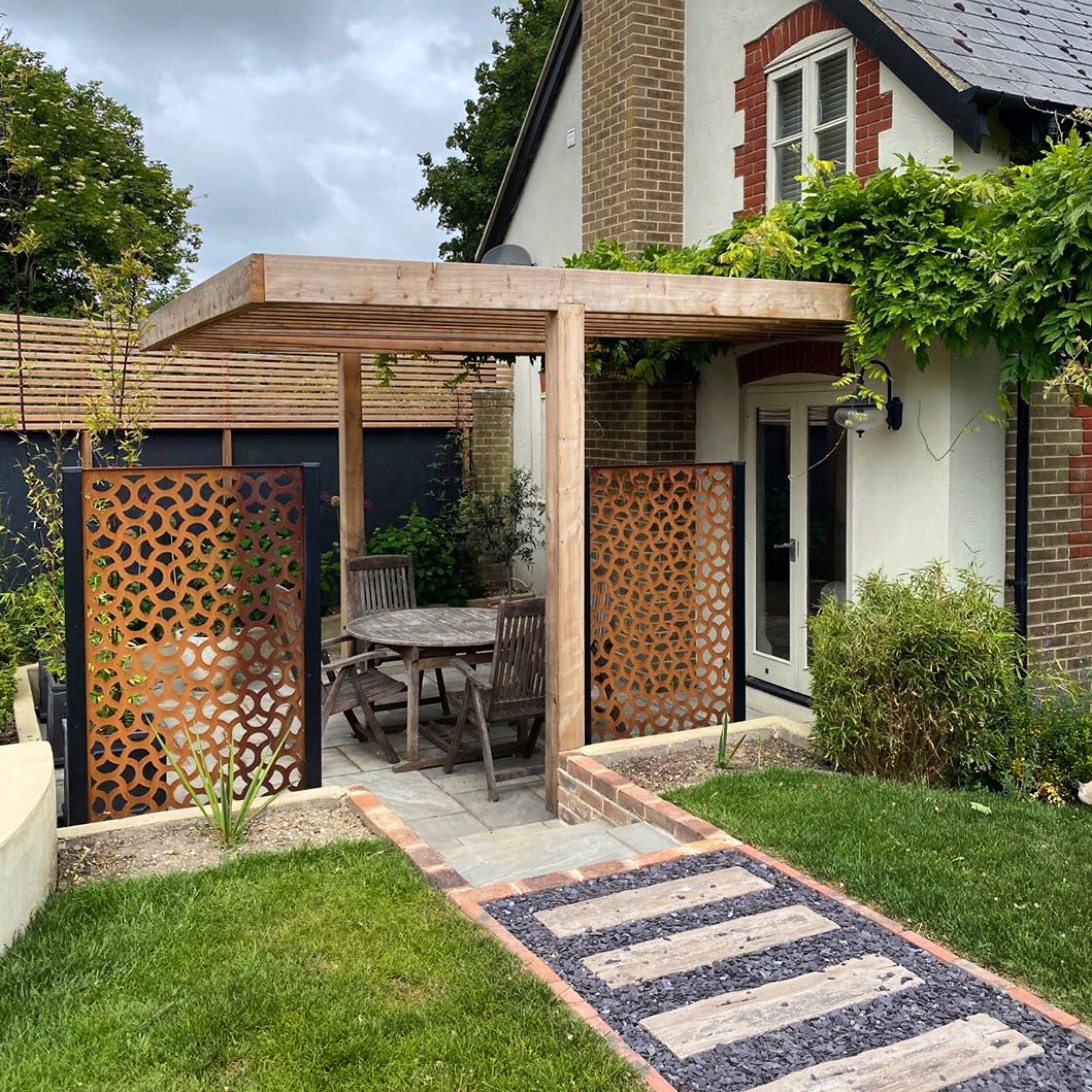
(Image credit: Screen with Envy)
Why not structure your small garden layout ideas into sections, using decorative screens? Open, patterned designs will keep light coming in, giving an airy, open-plan feel between your garden's 'rooms'.
Plus, garden screening ideas provide a stylish backdrop for potted plants or comfy seating. Pick a color and design which matches your theme to tie your garden's look together beautifully.
'City living can often be at the expense of privacy so it's important to first ascertain which areas of the garden provide a more secluded area in which to place seating,' says Nick Woodhouse of Woodhouse and Law.
'For those spaces that might benefit from greater screening, a carefully placed small tree or run of trellis can work wonders in providing a sense of privacy. There is also an ever-growing range of beautifully etched metal screens on the market at the minute, in every color, style and finish imaginable.'
For more ways to create a private outdoor space, check out our garden privacy ideas.
12. Add a tree to make a statement...
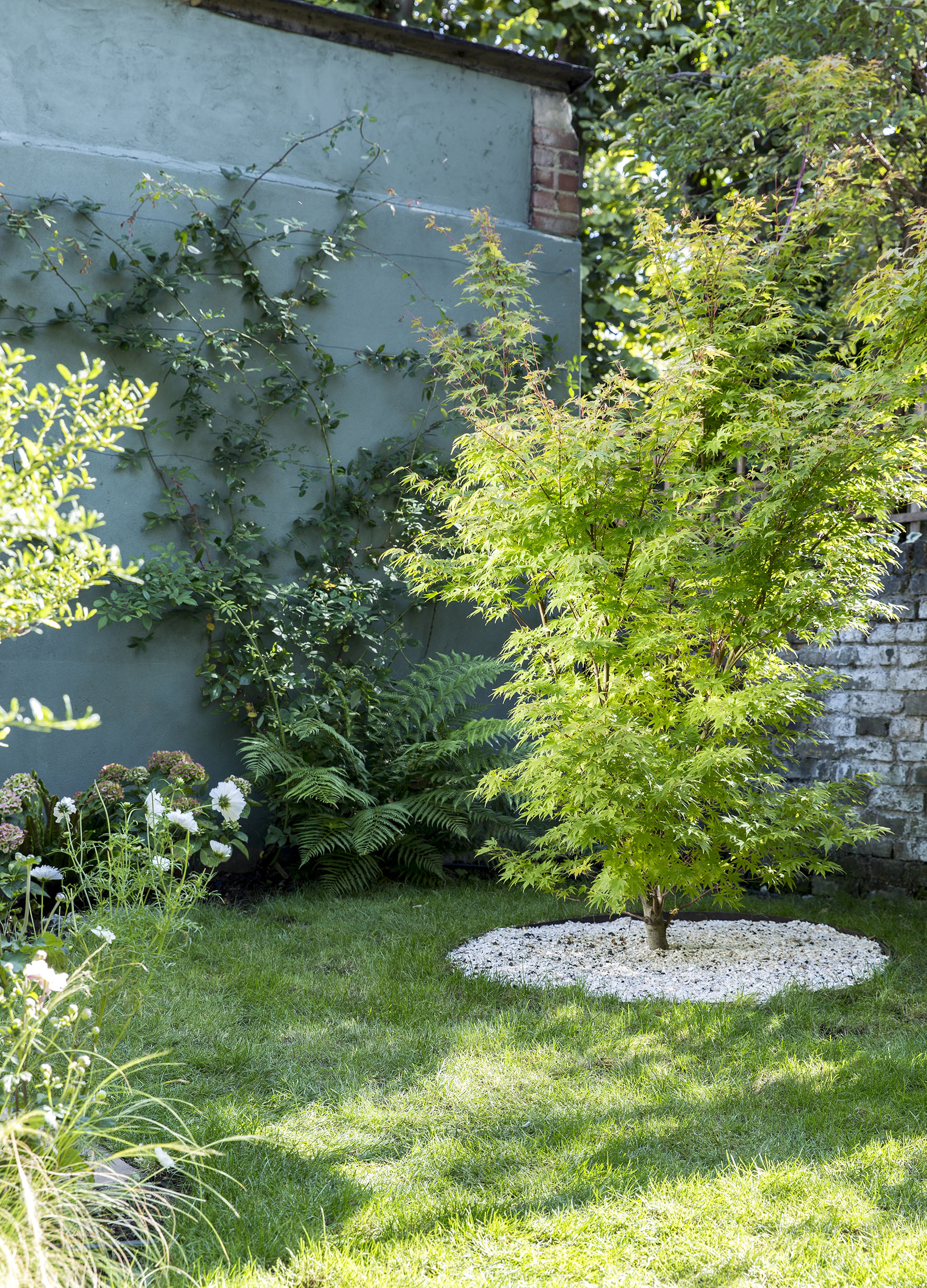
A beautiful tree can add interest your small garden layout ideas
(Image credit: Lizzie Orme/Future)
Placing a large specimen tree in a beautiful container will make a focal point of your space – a multi-stem tree is a good option. Like a beautiful cherry tree that has a rich, colorful and characterful bark. It enjoys full sun and looks stunning in a small garden. Silver birch is an easy-to-care-for addition to any garden. Plant in the back of a small space to create a focal point.
Take a look at our best trees for small gardens for more ideas on what to plant in your space.
13. ...or use trees to break up the space
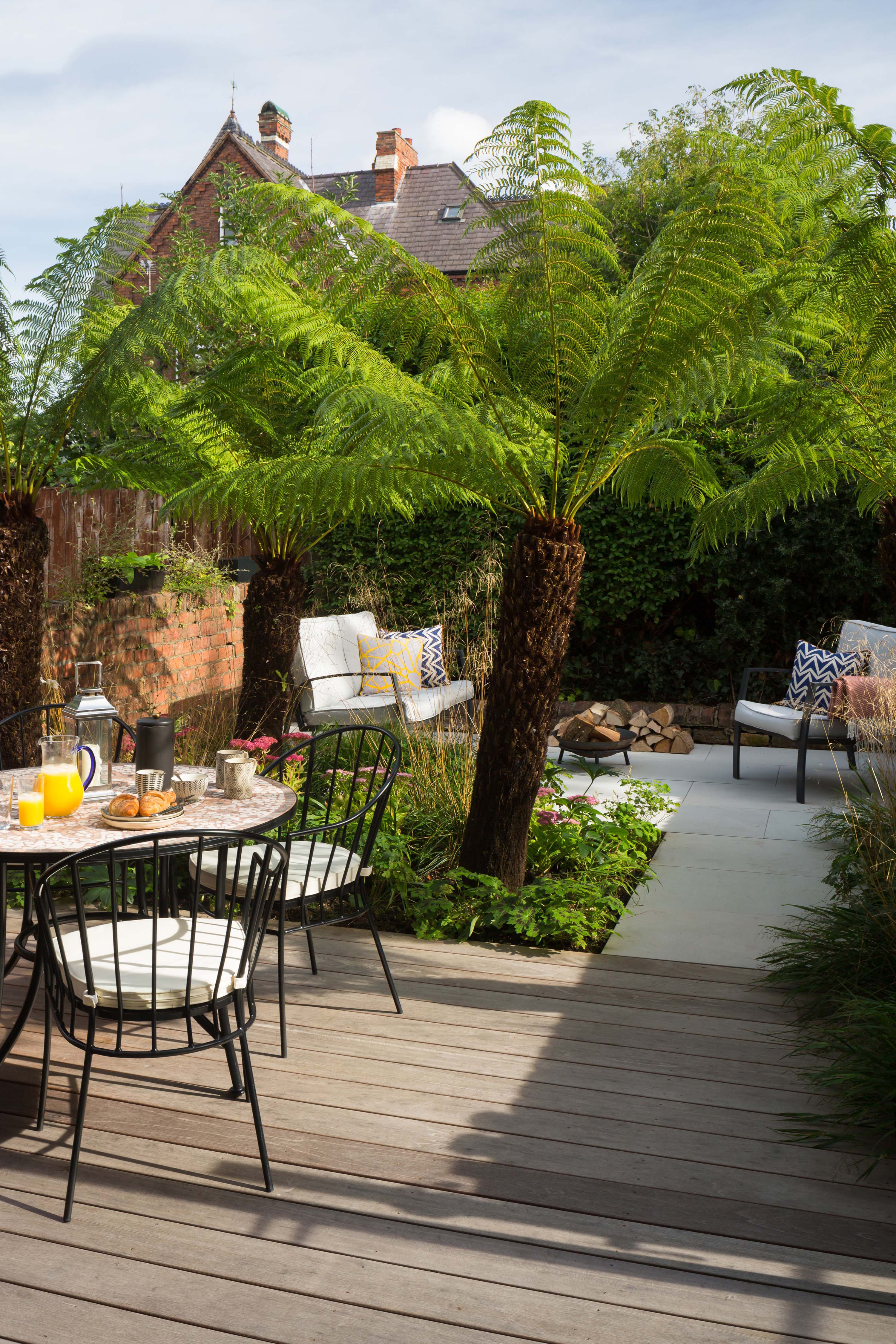
A small palm breaks up this garden layout
(Image credit: Alisdair Mcintosh/Future)
There's no reason why your small garden layout ideas can't include multiple trees, especially if you keep them in pots. And the good news is, there are plenty of varieties available which will be happy to be grown in this way.
Acers (Japanese maples) are perfect solutions for a boost of color with their feathery leaves. For a rustic, Mediterranean vibe, small olive trees make a great addition. A clipped bay tree is a good choice for a more formal look, plus you can use the leaves in your cooking.
If you've only got room for one tree, the RHS offer great advice – to choose one which adds interest across seasons, be it blossom in spring, attractive bark in winter, or fruit in autumn. A small apple tree, for example, will bring delight for months on end.
In terms of making a garden seem larger, 'small garden trees can help,' says garden designer Hannah Rickards. Try using 'two trees, to frame the end of a path leading to the next area of the garden.'
This small palm tree shown above adds to the tropical garden ideas of this space, whilst cleverly splitting the layout into two areas.
14. Soften the edges with plenty of plants
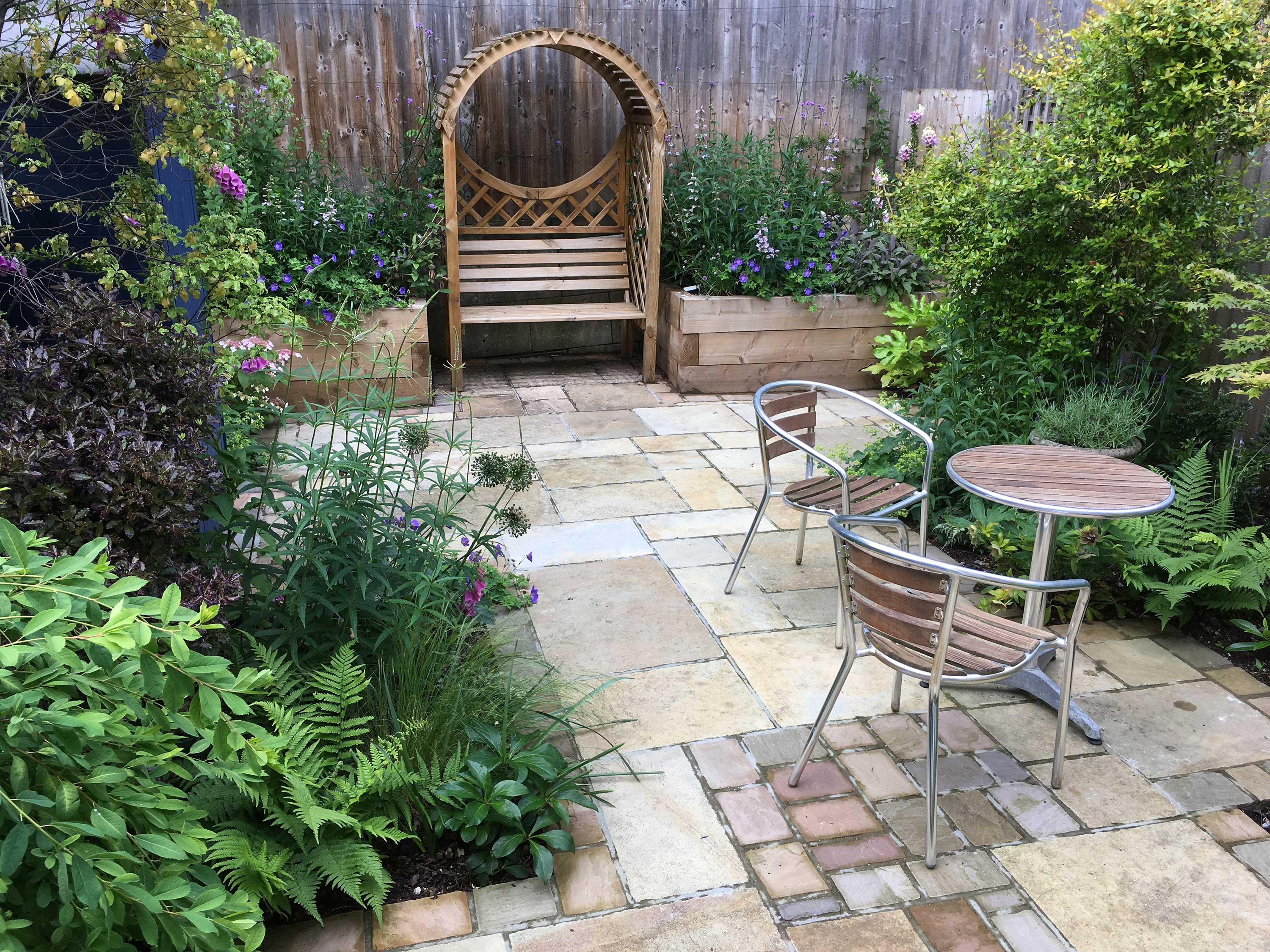
A welcoming garden with plenty of plants and light-coloured paving, designed by Melanie Jackson
(Image credit: Melanie Jackson)
Garden designer Melanie Jackson of Melanie Jackson Garden Design added climbers along the back of this small plot using raised beds, which will soften the high fence and sun bench as they grow.
If you'd like some climbers for your plot then consider clematis, for its clouds of delicate blossoms. Try 'Montana Mayleen' for pastel pink blooms with a vanilla-like scent, and bronzed foliage. You can find out how to grow clematis in our guide.
For fairy-like falls of purple petals, a trained wisteria is another lovely choice.
If your wall is in a sheltered, sunny spot, then a passionflower may well thrive, with its intricate flowers and bright orange fruit. Or, for show-stopping color, opt for Virginia Creeper. Its bright green summer foliage will turn to a blazing red as the weather cools.
Melanie has also added light, warm-hued paving ideas and plenty of greenery and flowers to make this garden an inviting space.
15. Impose a shape on the space
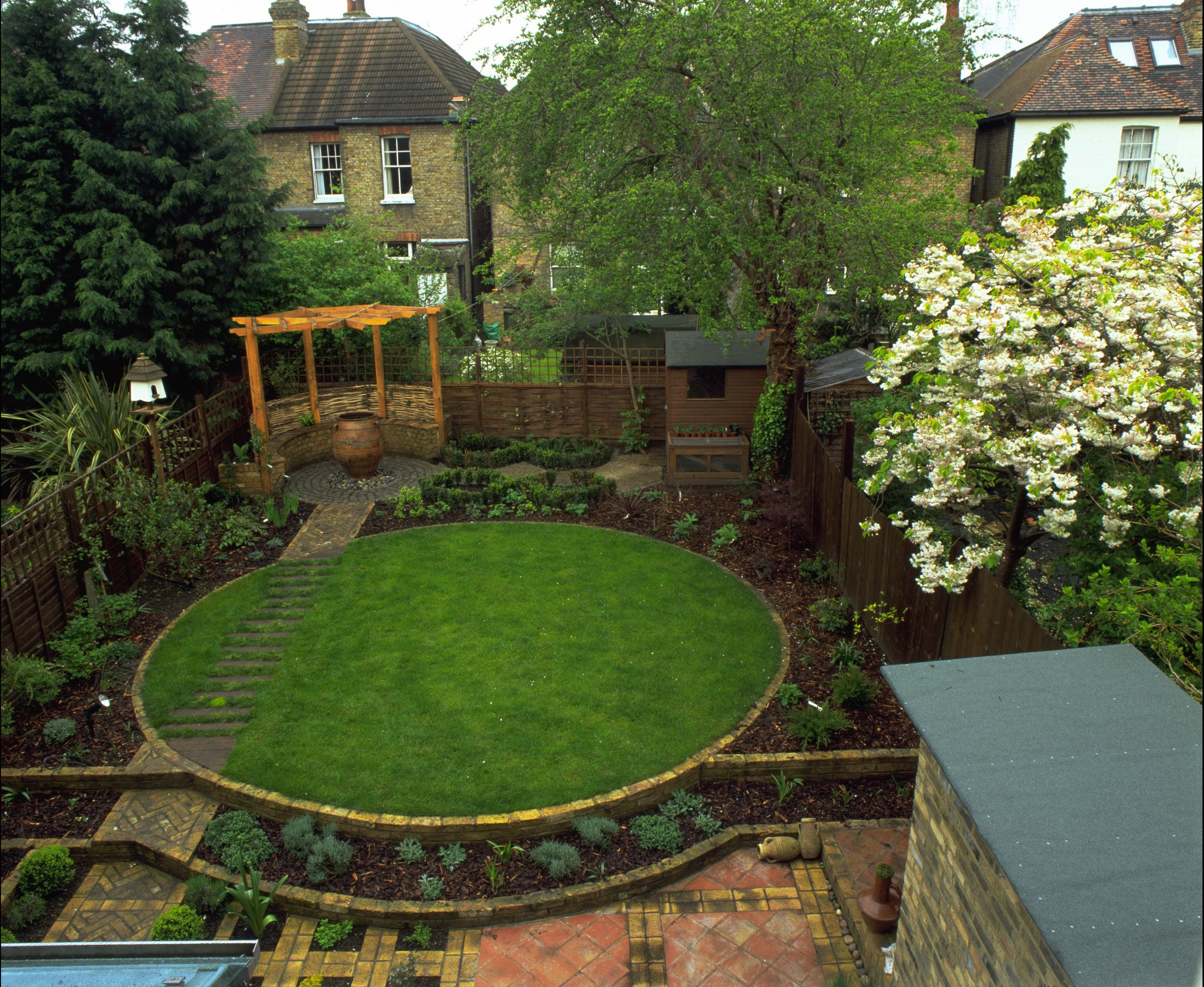
Creating a circular lawn is a clever way to add interest to your small garden layout ideas
(Image credit: Future)
Unless you live in a new build, it's not always possible to find a garden that's a regular shape. Long, thin, bulbous – gardens can feel unbalanced unless you use a design that either detracts from your odd bits, or makes the most of them.
If your garden has weird angles or an extra lump on the end of it, don't let that steer how you use it. Impose a rectangle, square or circle on it, in the form of lawn ideas or a patio, and use that to shape your small garden layout ideas.
16. Make a fire pit the focal point of your plot

Create a focal point with your fire pit
(Image credit: Colin Poole/Future)
Everyone loves a fire pit, and it can be enjoyed all year round. In winter, you can gather next to it with friends and family to keep cosy, toasting marshmallows and enjoying its magical glow beneath the stars. In summer, it's the perfect centrepiece for a summer evening party.
When it comes to designing your small garden layout, why not give your fire pit the spotlight it deserves. You'll find plenty of inspiration in our fire pit ideas.
17. Go simple for modern, year-round appeal
This garden design by Harrington Porter is a beautiful example of minimalism at its best. 'The cohesive palette of materials and colors is pared down,' says Creative Director Chris Harrington, 'which gives it a simple look that typically works well for small spaces.'
Chris says that you can, of course, create an eclectic, nature-inspired garden that is enchanting, if that's the style you're after. But, more often than not, less is more, especially if a contemporary vibe is the goal.
Chris also explains that by picking a very simple planting scheme of three olive trees, a low-maintenance, striking focal point is created, which won't change across seasons. This means that the clean and modern look is consistently maintained, to be enjoyed from the glass doors and windows of the house all year.
Nick Woodhouse from Woodhouse and Law also encourages a pared-back approach for small gardens. 'Don't introduce too many finishes or too many colors,' he says. 'Keeping the materials such as stone, gravel or terracotta to a minimum helps to give the space a greater sense of cohesion and consistency.'
'The same is true for colors; a simple scheme of cooler tones of, say, blue, silver and purple will help create a relaxed, less confined feel to the garden. This limited palette also stretches to the number of colors used in paints, accessories and furniture,' Nick adds.
18. Add shelves to boost your planting space

Clever shelving solutions create space for plants or lighting
(Image credit: B&M)
For a clever way to incorporate fuss-free garden storage ideas and expand the space in your small garden layout, add shelves behind seating. It'll provide a handy place to put a drink (on top of a jazzy coaster, of course), a lantern, or even a mini herb garden, without having to take up extra space with a full-sized table.
Matching your accessories and color schemes is also a great way to make your garden feel on-trend – try a monochrome palette for a contemporary choice.
19. Play with shapes to add visual interest
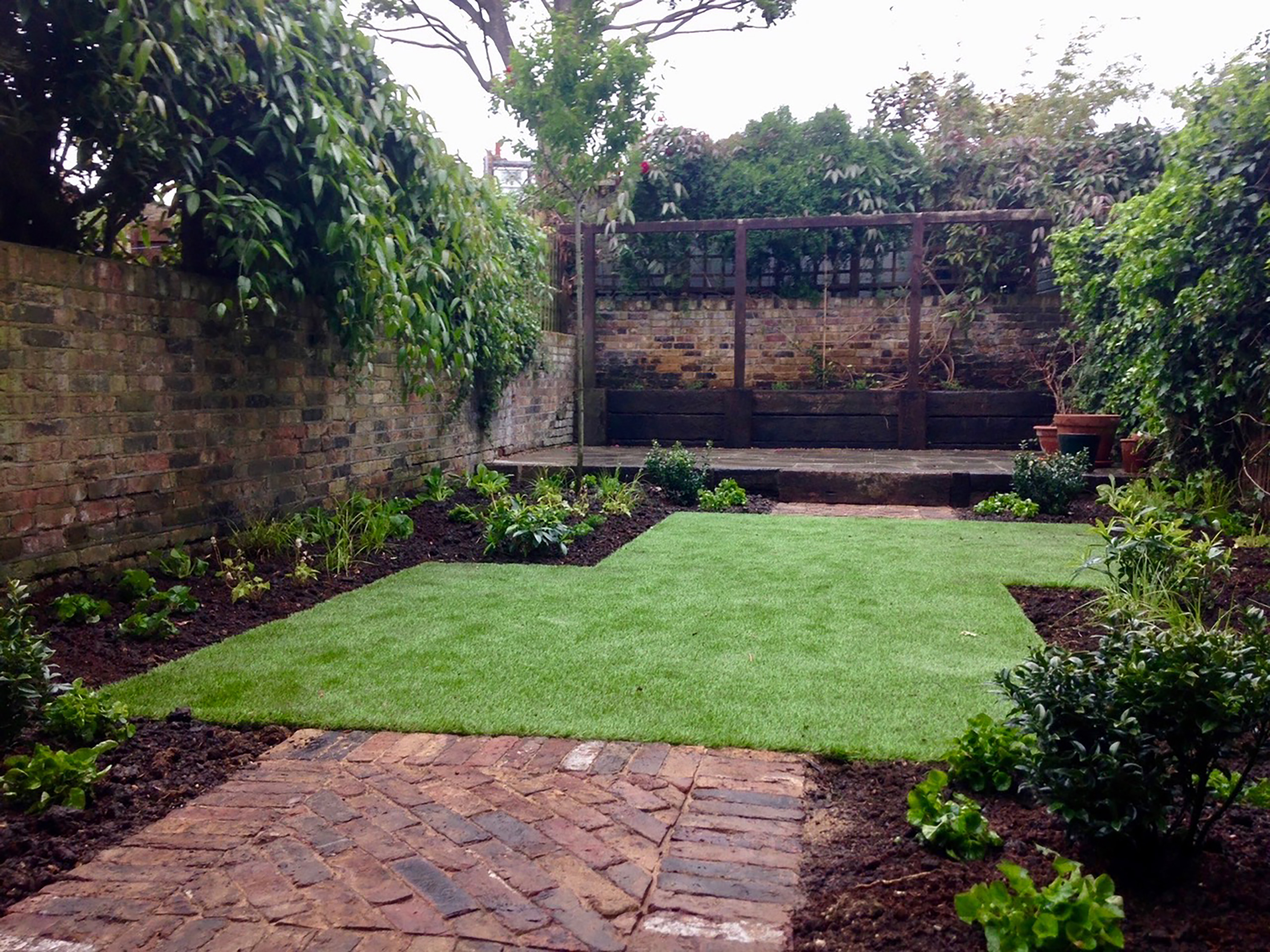
A lawn made up of two juxtaposed, identical squares creates interest in this design by Hannah Rickards
(Image credit: Hannah Rickards)
'A juxtaposed layout will make things more interesting than that of one whole open space,' says garden designer Hannah Rickards. 'By not revealing the garden at once the space feels more intriguing and walking through will feel like more of a journey to another part of it.
'Even the simple layout of two same-sized squares set slightly off from each other is more interesting than one rectangle,' she adds.
20. Add character with traditional features
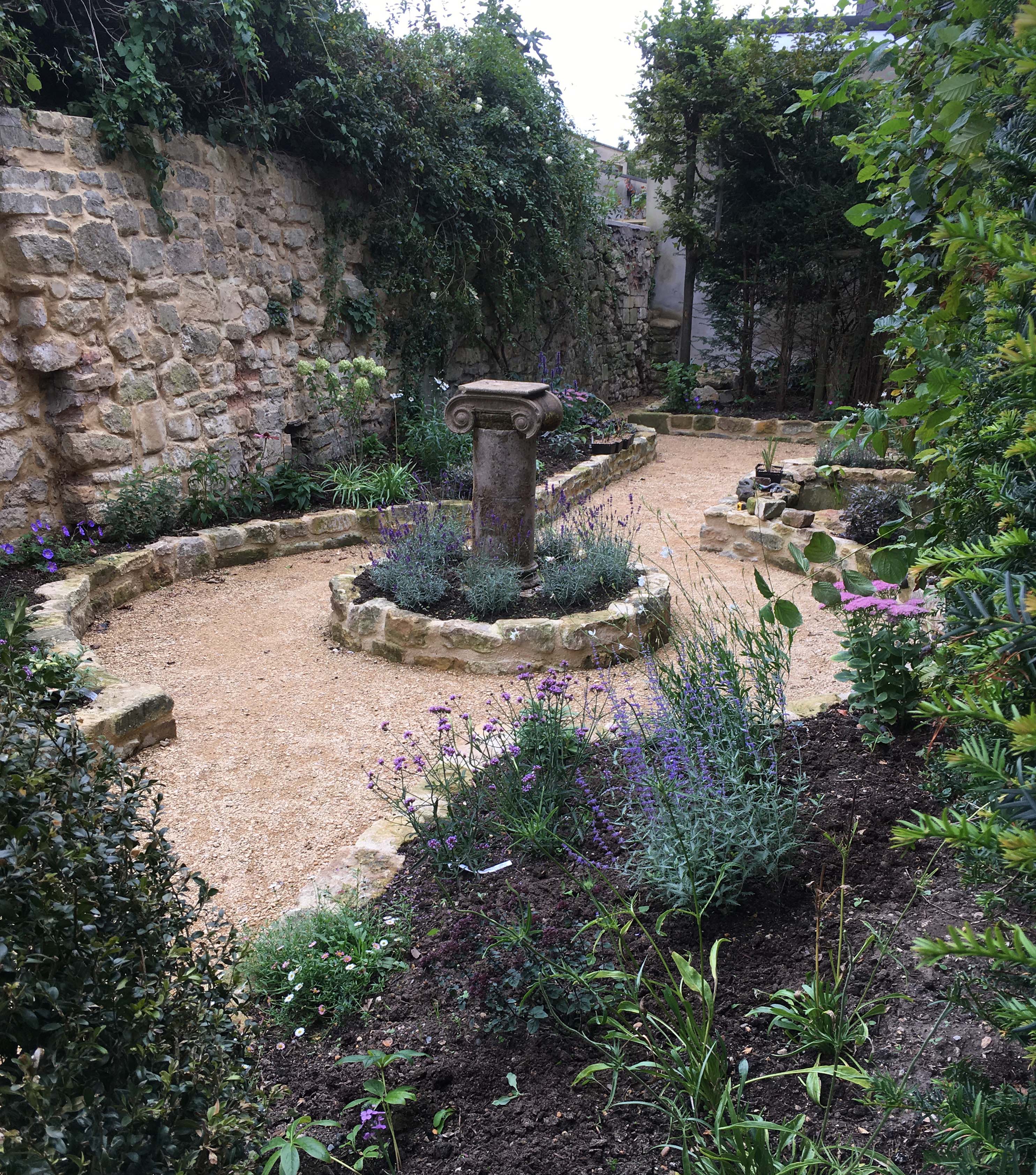
This narrow garden has an 18th century charm – designed by Melanie Jackson
(Image credit: Melanie Jackson)
This garden, designed by Melanie Jackson, demonstrates how a narrow slice of a garden can be given tons of character with a circular central point and ornamental stone column.
It creates an air of the 18th century beautifully, to fit with the garden's historic setting – the Georgian city of Bath, UK. The stone wall is softened by tumbling foliage and borders, which will erupt in colour and texture as the garden becomes more established.
There's more ways to make the most of a narrow plot in our long garden ideas.
21. Make your garden an extension of your home
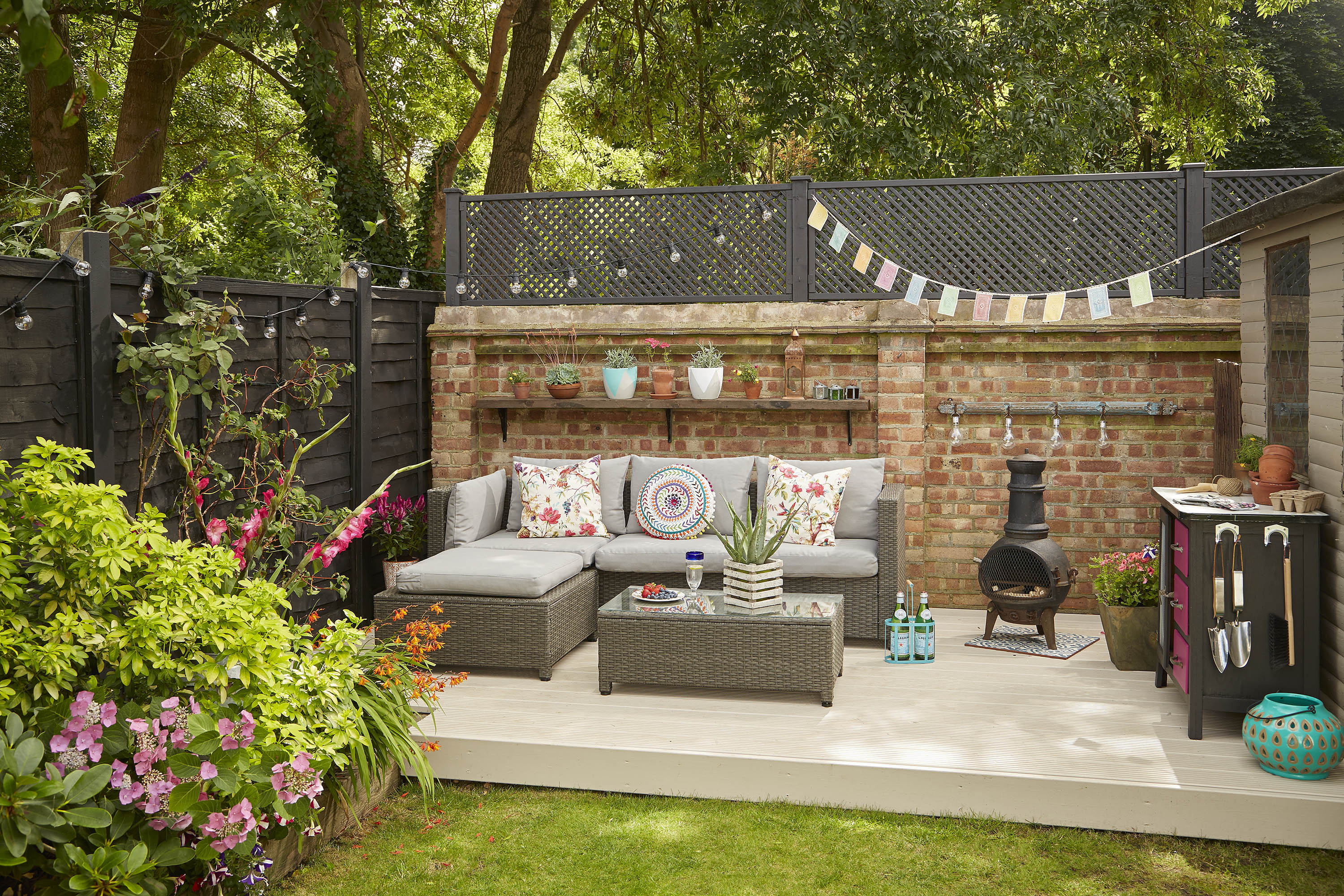
A raised indoor-outdoor living area, decorated with lights, cushions, and a chiminea
(Image credit: Jamie Mason/Future)
'Which room connects to the garden?' asks Sam Selby of Selby Landscapes. 'The way you use your garden could be an extension of this room – allowing you to use more space for the same activities.'
If you want a space for outdoor dining ideas, 'make an area that will encourage regular use. Find a nook for your dining table, which can be enhanced with small fire pits, the sound of water, and lighting.'
'Clever garden lighting will encourage you to enjoy the space throughout the day and late into the evening,' he adds.
The garden above is a great example of an outdoor extension to the home, complete with chiminea, string lights and even storage. Raising it up slightly separates it from the small lawn.
22. Be bold with shapes
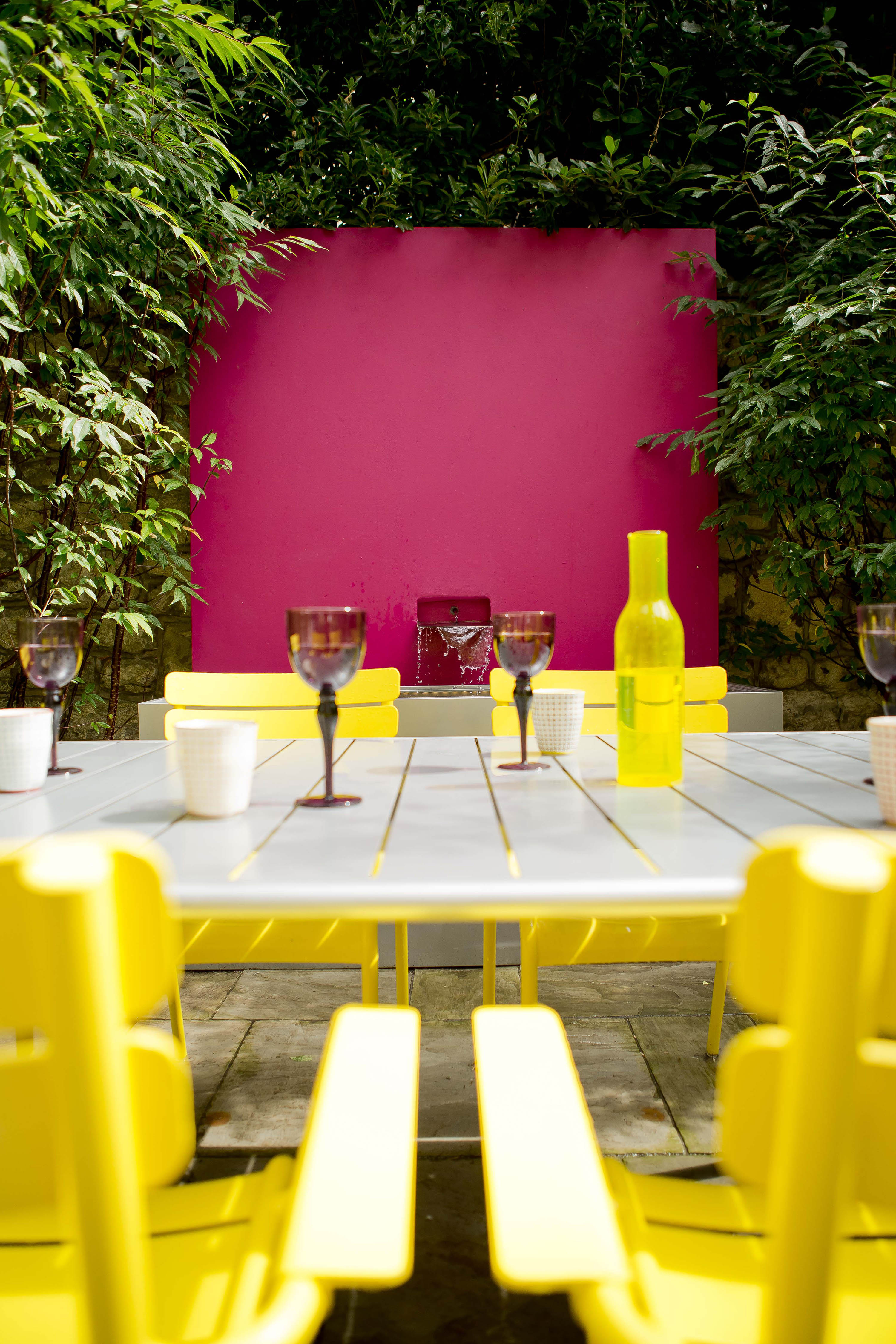
Go bold, letting the planting frame the views – design by Woodhouse and Law
(Image credit: Jason Harris/Woodhouse and Law)
'Strong geometric shapes contrast perfectly with the softness of carefully chosen planting whilst large pieces of furniture display a non-apologetic confidence in your choices,' says Nick Woodhouse of Woodhouse and Law.
'Try to provide ample paths and entertaining spaces; these are far more inviting and will ensure the garden is enjoyed to its maximum potential.' We love this example of a striking pink focal point positioned above the outdoor seating ideas.
23. Add pathways
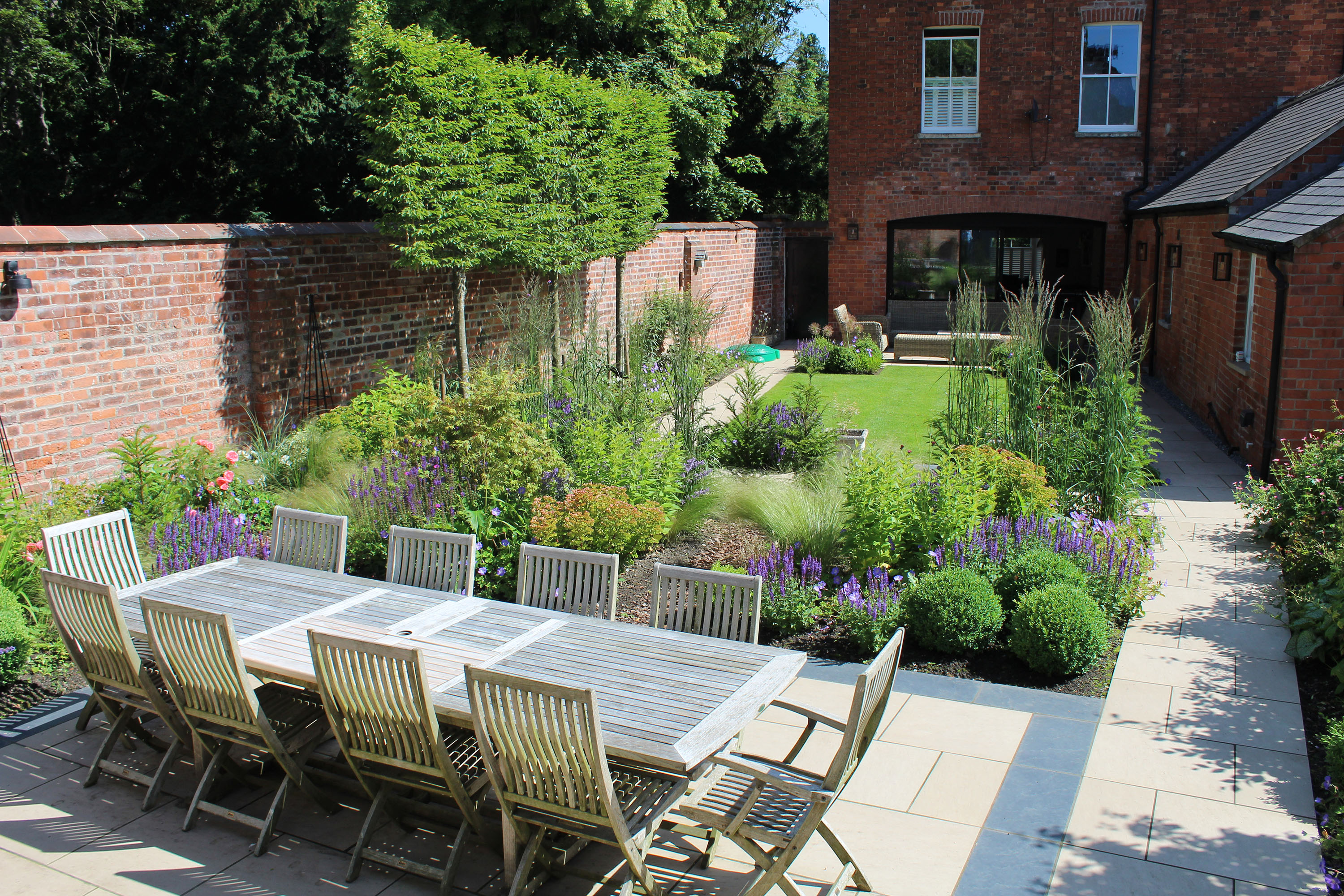
This garden, designed by Matt Haddon Gardens , uses pathways for function as well as form
(Image credit: Matt Haddon)
Matt Haddon MSGD, landscape and garden designer of Matt Haddon Gardens, uses porcelain paving throughout this garden to link its different sections together. The pathways don't just add cohesion, however. They also enable the homeowners and guests to circulate around the plot, to view the plants and enjoy the space.
The pathways allow for a choice of routes, including a direct and practical route for the frequent journey from the house to the garage. Other paths through the denser planting are good for easy maintenance, plus are fun for grandchildren to run around. So, why not try adding some inspiring garden path ideas to your own small garden layout ideas?
How do you lay out pots in a small garden?
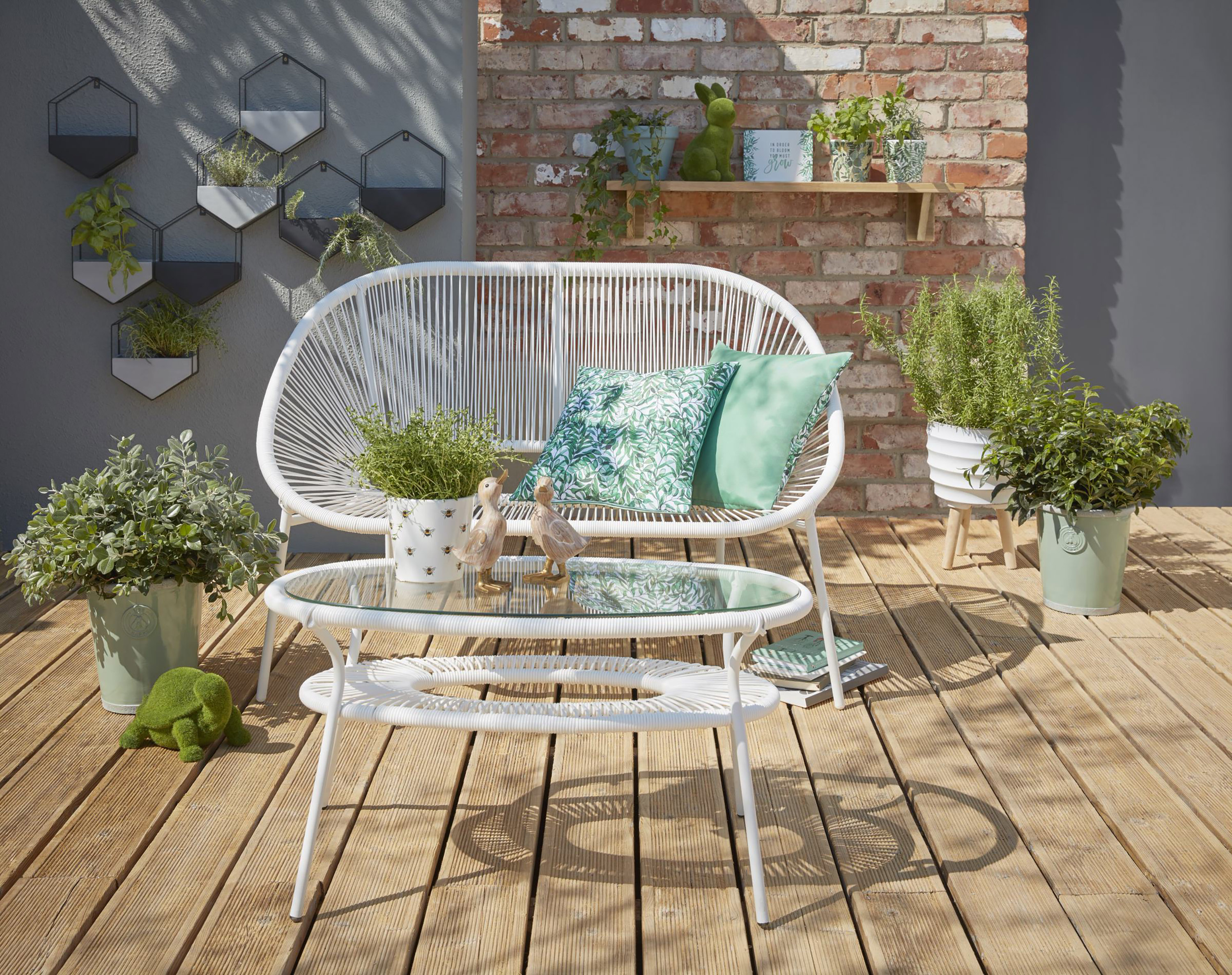
Bring your small garden layout ideas to life with sea-green tones, simple furniture, and potted plants
(Image credit: George Home)
Put your biggest, tallest pot at the back – this will be your main focal point for your container gardening ideas. Perhaps it's a potted tree or a showy display of agapanthus. Then, begin to surround it with gradually smaller pots, maybe a planter of bulbs or a small shrub rose. Put the shortest pots at the front – this could be small containers full of violas or succulents, for example.
This will allow you to see everything, whilst keeping it feeling balanced. You can always use bricks to add height to the ones further back if needed.
Generally, groups look more pleasing in clusters of three, or in odd numbers. Remember what your plants need, too – that way they can all thrive together. It's not much use positioning sun-loving plants alongside shady ones!
How do you create depth in a small garden?
A well-known trick is to hang a mirror on the far wall or fence. It will instantly appear like your garden is longer than it is, as well as bouncing the light around. Head over to our garden mirror ideas for inspiration.
You can also work with long lines down the length of the garden – with decking, for example – which will also help to elongate your plot.
Try using large planters and any ornamental trees towards the back of your plot, with smaller ones at the front. And, when it comes to colour, light tones will brighten a space. However, painting far boundaries in darker, natural colours such as sage green or even black can help them to recede.
How do you split up a small garden layout?
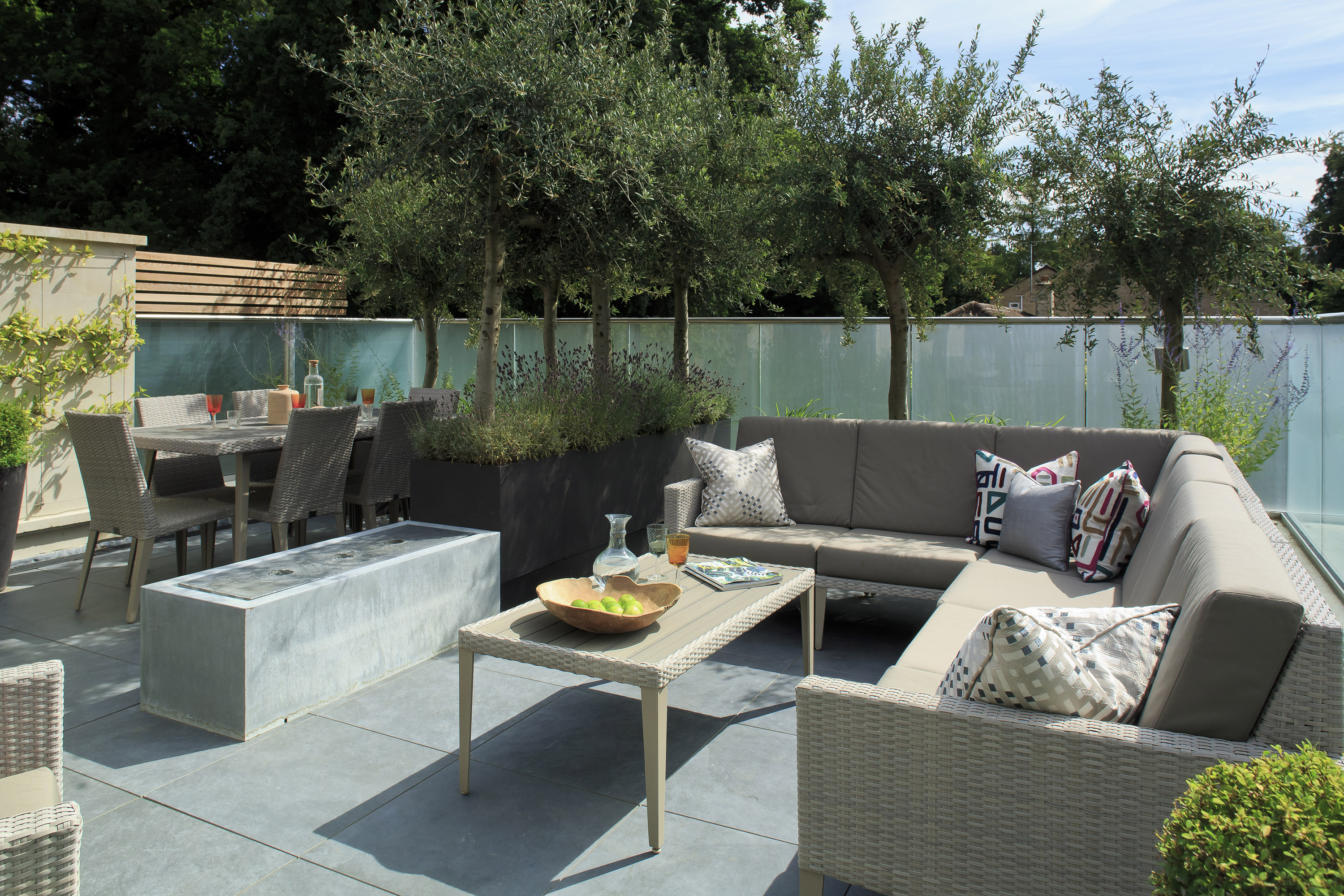
This small garden, designed by Woodhouse and Law , is split into separate areas with the help of stunning planters
(Image credit: Jason Harris/Woodhouse and Law)
We've already mentioned screens and color blocking, and we've touched on using different paving for zones too. But, there are plenty of other ways to divide up your small garden layout ideas.
Try small, clipped hedges – either trimmed into neat rectangles or perhaps cloud pruned for more organic shapes. You can also use large planters. Half walls, made of stone, are another option, and you can add plants to them too – take a look at our small rock garden ideas for inspiration.
You can also work with levels. Try putting a seating area higher up, to draw the eye and section it away into a separate 'room'.
How To Organize Your Tiny Garden
Source: https://www.gardeningetc.com/design/small-garden-layout-ideas
Posted by: smithdonvorged.blogspot.com


0 Response to "How To Organize Your Tiny Garden"
Post a Comment